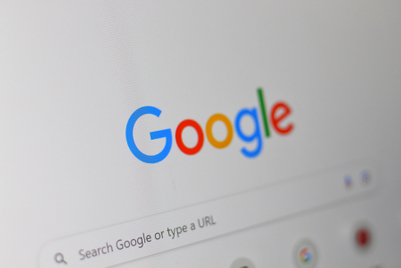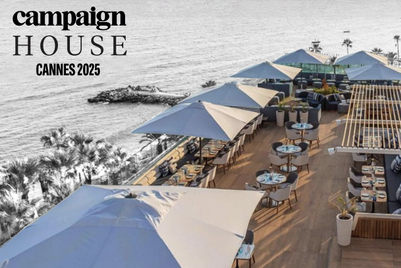
In our Asia's Top 1000 Brands research, we asked consumers which brands they deem to be the most mobile-friendly.
Samsung may still rule the roost as Asia’s top brand overall, but when we asked Asian consumers this year which brand is the most mobile-friendly, the Korean electronics giant was not their first choice. Or even their second.
Here Apple finally had its day, voted most mobile-friendly overall. “I’m a diehard Apple user,” admits Arthur Policarpio, CEO of Havas’ mobile marketing agency Mobext in the Philippines. “I think their ease of use and closed ecosystem approach where everything works so seamlessly works for me. In terms of user-friendliness it’s just a different experience. It’s a personal preference and a personal opinion.”
Anytime you compare Apple and Samsung it’s going to come down to a personal opinion, with ardent supporters on either side. Mobile-friendliness can easily get lost in the debate. Ben Hui, head of digital at IPG Mediabrands Hong Kong, notes that Apple and Samsung may go neck-and-neck on product development and how well they market. But Apple stands out in creating experiences around music and entertainment, melding its mobile products with a user’s favourite content to exude enjoyment. “On a cognitive-level you associate the brand more with a lifestyle while Samsung is still in its core essence a product in a brand.” So in effect, consumers may equate both with great ‘mobile’ products, but Apple is more likely to conjure up ‘friendliness’.

Not surprisingly, mobile phone and tablet brands were top of mind for consumers in this category, forming half of the top 20 mobile-friendliest brands: Apple (1), Samsung (3), Sony (6), LG (7), Asus (11), Xiaomi (14), Huawei (15), Oppo (16), Panasonic (19) and HTC (20).
But mobile device makers aside…
What makes a brand mobile-friendly?
“Ease of use,” says Hui. “Which doesn’t require me to jump through a lot of hoops but gets me from my need to my want.” So if you’re travelling and need a place to stay, a mobile-friendly product will not only let you easily find a place on your phone, but will allow you find the exact kind of place with the things you want.
Ecommerce platforms, though, are the most obvious iterations of this, delivering whatever consumers desire (plus some extras they discover) with a few taps on their handhelds. Fittingly, ecommerce sites featured prominently with 7 of the top 30 mobile-friendly brands: Amazon (4), Lazada (5), Taobao (17), Ebay (21), Rakuten (23), Flipkart (24) and Shopee (26) all earning spots here.

Chinese brands also excelled. In addition to Taobao and the three Chinese phone brands named earlier, WeChat (22) and Baidu (27) also featured in the top 30. That six of the 30 mobile-friendliest brands are Chinese comes as little surprise to Hui, who believes China is the most accepting market of new technology and changes. Whereas Western markets might first consider risks around mobile tools like facial recognition, he says, “in China it’s just [about] ease of use… Whatever gets consumers to that service or good they need in simplest way possible.”
“Ease of use has to be present for all – that’s a fundamental,” says Policarpio. “It has to be quick, it has to be easy. It has to be 1-2-3 clicks away. That’s a must-have on mobile”.
That doesn’t necessarily mean, however, that simplicity always trumps comprehensiveness. Policarpio says some services like banking need to be comprehensive to allow him to do all the different kinds of transactions he needs. But basic customer service functions, like answering FAQs or filing complaints quickly through messaging, need to be simple and easy.
|
POLICARPIO'S 4 KEYS TO MOBILE-FRIENDLINESS 1. Does your brand have a designed-for-mobile site? A lot of brands think having a responsive site that shrinks the interface to fit a mobile screen is enough. But brands need to design a different mobile experience because people are looking for different stuff on their mobile device. They usually don’t need detailed corporate information. 2. Can people find you on mobile search? On mobile, you’re more likely to have consumers searching for solutions instead of a brand name. So is your brand visible when they’re posting those key questions? 3. How are you channelling marketing and communications? Are your campaigns and brand message being sent out through channels that easily reach consumers on their mobiles? 4. Do you improve customer experience through mobile? Has a brand invested in tools like a messaging channel or mobile app that makes it easier for customers to get what they want done? |
Google’s mobile-first indexing
On the first two points above, Google (the #2 mobile-friendly brand in our survey) is giving developers a nudge by rolling out mobile-first indexing. At the end of March, Google announced that it’s starting to shift its main search indexing from desktop to mobile sites that follow best practices. Since most Google searchers are on mobile devices, it makes sense to crawl, index and rank sites and search results based on the mobile versions which they will actually see.
While desktop-only content will continue to be ranked in Google searches, the Internet giant reminded webmasters that “we do evaluate all content in our index – whether it is desktop or mobile – to determine how mobile-friendly it is. Since 2015, this measure can help mobile-friendly content perform better for those who are searching on mobile.”
This important move not only demonstrates Google’s own commitment to mobile-friendliness, but is making it imperative that any web publisher, including brands, concentrate efforts towards mobile-first content.
Brand apps
Some brands are deciding to focus their mobile engagement efforts on developing apps rather than mobile Internet. For brands that provide key services to people, a well-designed and functional app can endear users, but for a straight goods producer like an FMCG brand, there’s less value.
Policarpio says his filter for deciding whether brands need apps are two main questions. Firstly, does it provide genuine utility – something to improve customers lives that can’t be done as effectively through another channel. Secondly, will the app be used on a regular basis? If it’s an app to help you file insurance documents once a year, you don’t need an app for it. If it’s an app that helps you hail a taxi, buy a coffee, transfer money or perform any regular activity, it can be a great brand tool.
Category leaders
A good example of this is Starbucks, which ticks off both brand app boxes. People like to buy coffee every day and their app incentivises that loyalty while also making buying more convenient. “It makes life easier… payment is easier, you can load up on credit,” notes Hui of the Starbucks app. “But it also allows people to preorder pickups.”

Starbucks ranked as Asia’s 34th mobile-friendliest brand. No other restaurant or coffee shop came close. Pizza Hut (97) was the only other restaurant to make the top 100 with fellow fast-food giants KFC (118), Domino’s (120) and McDonald’s (121) all trailing well behind.
So what about brands whose products you're less likely to buy as frequently as a daily cup of coffee? Here, Nike, provides a great lesson as the only consumer goods maker (outside mobile devices) to crack the top 10 mobile-friendliest brands. People don’t buy shoes or sporting goods every day, but they might use them several times a week.
“Nike has done a great job of creating mobile apps that support the lifestyle they’re promoting,” says Policarpio, pointing to the brand's popular fitness apps like Nike Training Club or Nike Running Club. “They’re one of the early movers in this – creating an app that’s very utility-based and not just an app that’s a product brochure.”
Among banks, Citibank led the way as the 31st mobile-friendliest brand in Asia. Hui, a Citibank user, says he appreciates the easy navigation of their mobile site and app. “The login process and transactions are easily laid out, I don’t need to find anything. I feel secure using their site [and] it looks nice and clean.” Citibank even managed to edge out online payment giants Alipay (33) and Paypal (37) ahead of their closest banking competitors DBS (40), HSBC (42) and ANZ (43).

Air Asia cleaned up among travel brands, ranking 44th, followed by travel booking platform Traveloka (64) and Air New Zealand (96), which were followed well behind by Tripadvisor (193) and Qantas (197). While Hui doesn’t use the Air Asia app, he notes the airline shows its commitment to mobile-friendliness by providing wifi for passengers and allowing them to stream entertainment off their phones on board.
The fact that banks featured prominently in this category doesn’t surprise Policarpio, who says a good mobile experience is not an option for banks anymore, but a must. He feels the same should apply to airlines too. “This should be the industry standard. Every airline must have a very good experience. Every brand with a loyalty solution needs to mobile-enable that experience.”
|
THE SURVEY QUESTION Thinking of your personal experience or from what you have seen and heard from others, please name the top 2 brands which are the most mobile-friendly. By mobile-friendly, we mean brands that you interact with easily on your mobile phone, either through apps or mobile internet services. This could include ease of finding information on the brands online, mobile user experience including navigation, browsing and purchasing online via your mobile. |




+(900+x+600+px)+(3).png&h=334&w=500&q=100&v=20250320&c=1)
.jpg&h=334&w=500&q=100&v=20250320&c=1)





.jpg&h=334&w=500&q=100&v=20250320&c=1)



.jpg&h=268&w=401&q=100&v=20250320&c=1)


.jpg&h=268&w=401&q=100&v=20250320&c=1)

